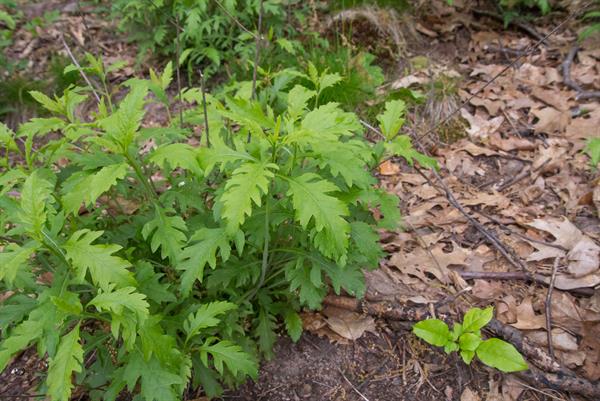
Origin/Endemic status: Native
Taxonomy Comments: The various named varieties or subspecies need additional study; the variation seems to be too clinal to be practically recognized taxonomically.
Synonymy: = FNA17, Mi, NY, Pa, RAB, Tat, Tn, W; = Gerardia pedicularia L. var. pedicularia – F; > Aureolaria pedicularia (L.) Raf. ex Pennell ssp. austromontana (Pennell) Pennell – S, Pennell (1935); > Aureolaria pedicularia (L.) Raf. ex Pennell ssp. caesariensis Pennell – S; > Aureolaria pedicularia (L.) Raf. ex Pennell ssp. carolinensis Pennell – S, Pennell (1935); > Aureolaria pedicularia (L.) Raf. ex Pennell ssp. intercedens (Pennell) Pennell – Pennell (1935); > Aureolaria pedicularia (L.) Raf. ex Pennell ssp. typica (L.) Pennell – Pennell (1935); > Aureolaria pedicularia (L.) Raf. ex Pennell var. ambigens (Fernald) Farw.; > Aureolaria pedicularia (L.) Raf. ex Pennell var. austromontana Pennell – C, G, K1, K4; > Aureolaria pedicularia (L.) Raf. ex Pennell var. intercedens Pennell – C, G, K1, K4, NE; > Aureolaria pedicularia (L.) Raf. ex Pennell var. pedicularia – C, G, K1, K4, NE; > Gerardia pedicularia L. var. austromontana (Pennell) Fernald – F; > Gerardia pedicularia L. var. intercedens (Pennell) Fernald – F; > Gerardia pedicularia L. var. pedicularia – F
Heliophily: 6
Hover over a shape, letter, icon, or arrow on the map for definition or see the legend.
 © Gary P. Fleming | Original Image ⭷
© Gary P. Fleming | Original Image ⭷ © Gary P. Fleming | Original Image ⭷
© Gary P. Fleming | Original Image ⭷ © Erik Danielson source | Original Image ⭷
© Erik Danielson source | Original Image ⭷ © Bruce A. Sorrie | Original Image ⭷
© Bruce A. Sorrie | Original Image ⭷ © Radford, Ahles and Bell | Original Image ⭷
© Radford, Ahles and Bell | Original Image ⭷Feedback
See something wrong or missing on about Aureolaria pedicularia? Let us know here: (Please include your name and email if at all complicated so we can clarify if needed.)
Cite as...